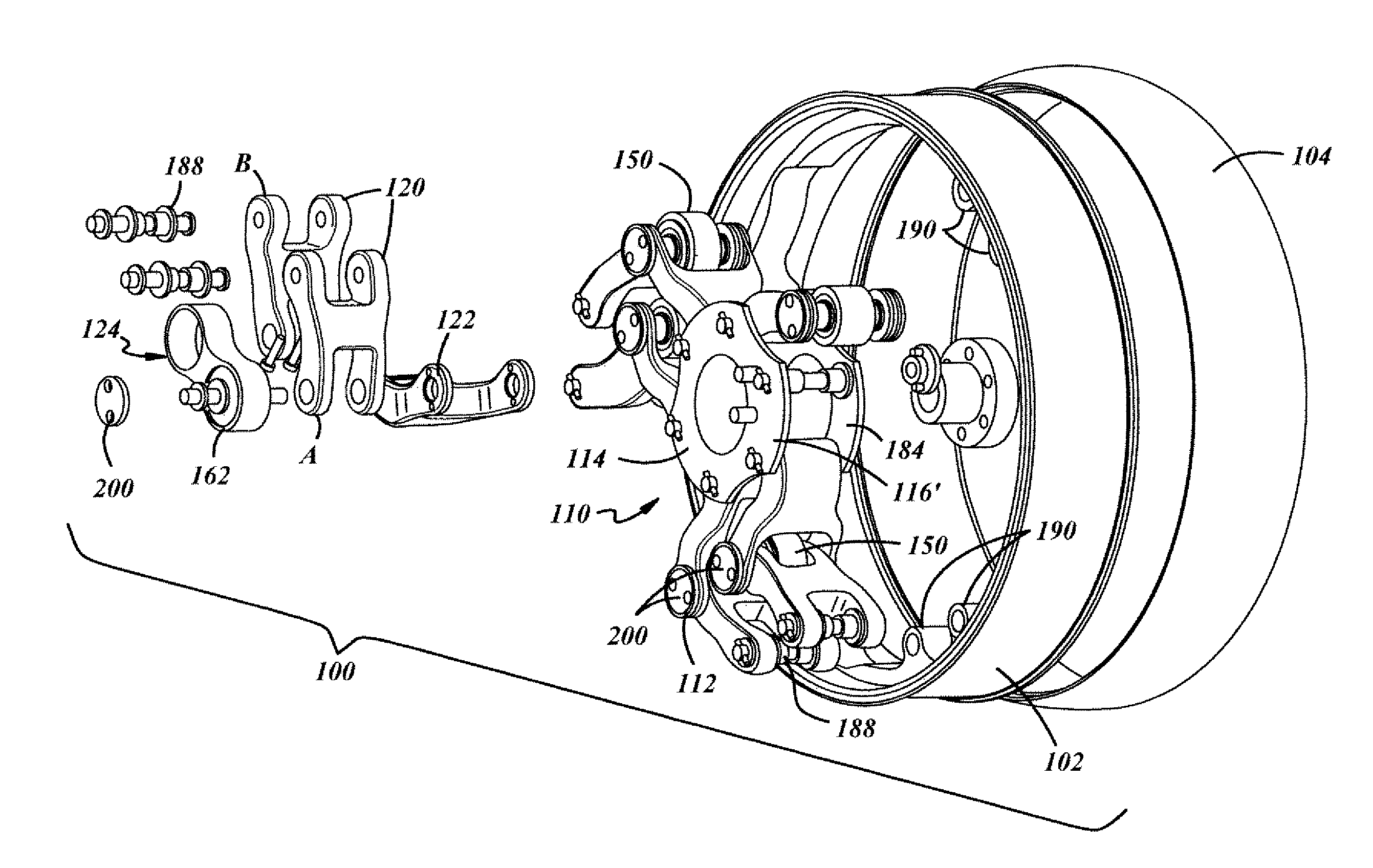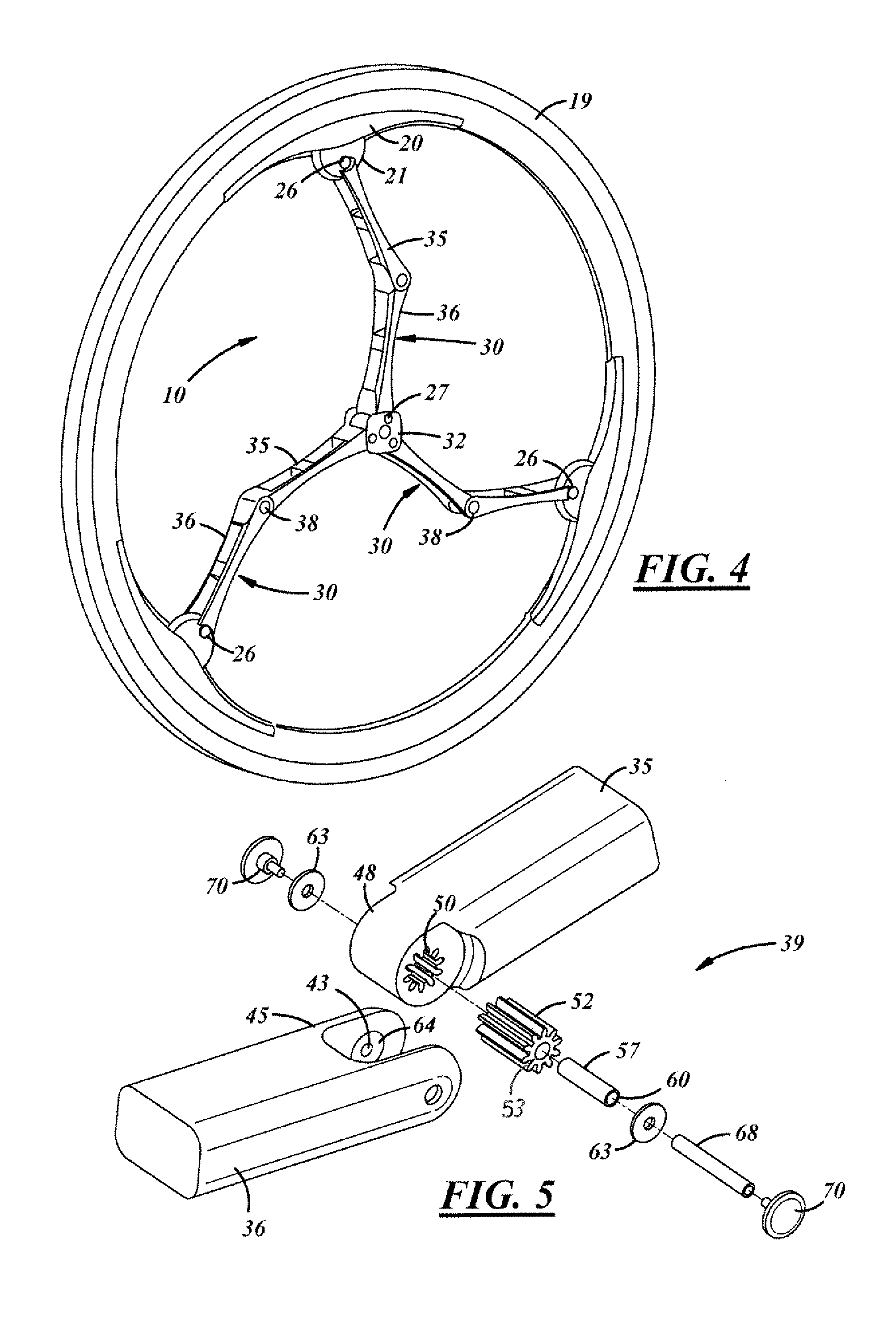Mechanism based reactive planar suspension
a technology of mechanical and planar suspension, applied in the field of suspension systems, can solve the problems of inconvenient use, difficulty in maneuvering the wheelchair, and difficulty in going over any type of surface other than a smooth surface, and achieve the effect of reducing the unsprung mass of the vehicl
- Summary
- Abstract
- Description
- Claims
- Application Information
AI Technical Summary
Benefits of technology
Problems solved by technology
Method used
Image
Examples
Embodiment Construction
[0027]With reference to FIG. 1, this is a schematical representation of the limitations of current suspensions. Current suspensions are not fully effective at absorbing all of the energy encountered by a wheel contacting an obstacle. As can be seen in the Figure, a wheel 1 encountering an input in the nature of obstruction 2 can move only in the fixed linear path permitted by the suspension. Accordingly, while some of the energy from the impact is absorbed by the suspension's springs or shock absorbers 3, or a combination thereof, a vectored component 7 normal to impact reaction line 4 is transferred directly to the chassis along the direction line 6.
[0028]Ideally therefore, rather than a suspension that has a single or fixed path, it is preferable that the path of suspension travel when reacting to an input is the path that will best absorb the input's energy. So instead of the predetermined path of travel in a conventional system, the present reactive suspension proposes that its ...
PUM
 Login to View More
Login to View More Abstract
Description
Claims
Application Information
 Login to View More
Login to View More - R&D
- Intellectual Property
- Life Sciences
- Materials
- Tech Scout
- Unparalleled Data Quality
- Higher Quality Content
- 60% Fewer Hallucinations
Browse by: Latest US Patents, China's latest patents, Technical Efficacy Thesaurus, Application Domain, Technology Topic, Popular Technical Reports.
© 2025 PatSnap. All rights reserved.Legal|Privacy policy|Modern Slavery Act Transparency Statement|Sitemap|About US| Contact US: help@patsnap.com



